Many may think they are the same when they look at Chinese and Japanese art. But the truth is that there are distinct differences between both Japanese and Chinese art.
The main differences between Japanese and Chinese art include the materials used and how they were executed. Religion played a significant role in influencing both Japanese and Chinese art. Both countries were Buddhist, but Japan also had Shintoism influence, and China had Confucianism and Taoism. To understand Japanese and Chinese art, you also need to understand each country’s historical aspects; history played a central role in influencing Chinese and Japanese art.
Table of Contents
- The Main Differences Between Japanese and Chinese Art
- What Are The Major Influences On Japanese Art?
- What Are the Influences on Chinese Art?
- The Timeless Significance of Chinese and Japanese Art: 10 Reasons for its Continued Relevance
- Frequently Asked Questions
- Related Questions
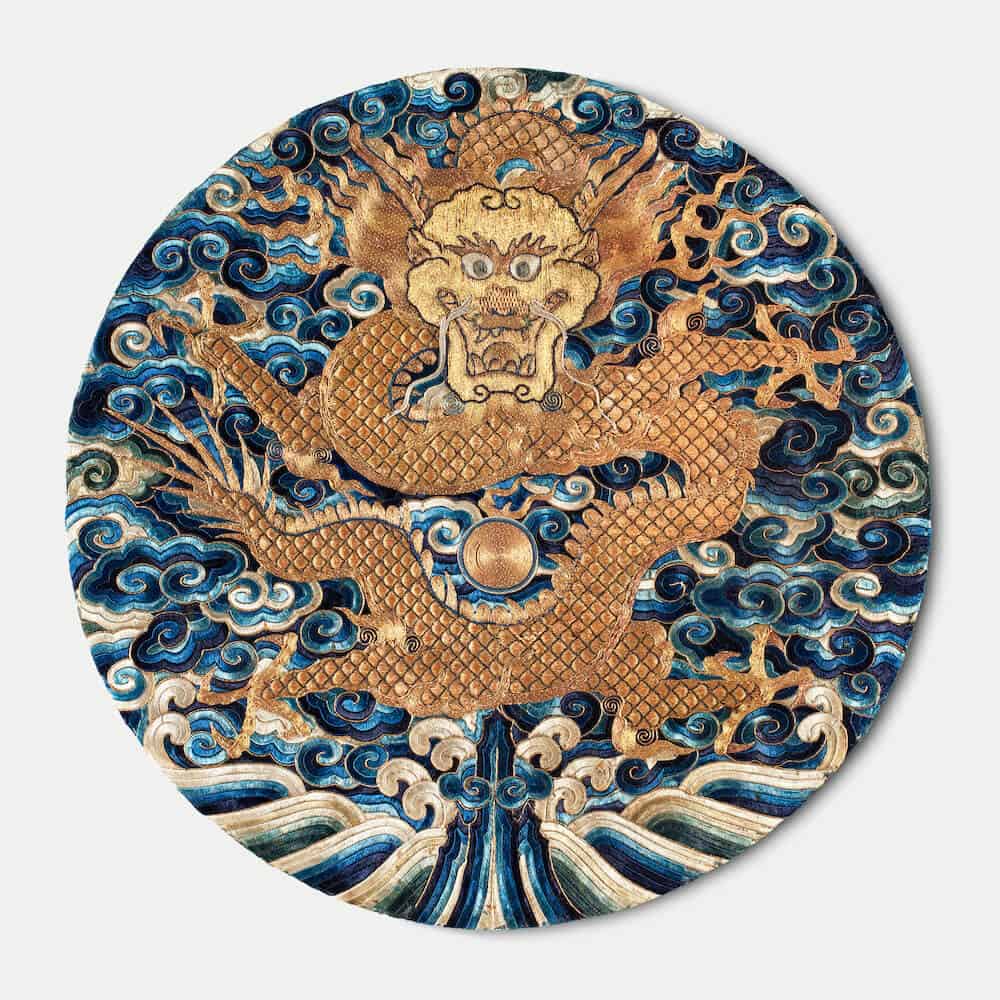
The Main Differences Between Japanese and Chinese Art
The major difference between Chinese and Japanese art is in the art itself and the art mediums they use. Here are some basic differences:
- Chinese art is known for its paper and silk paintings, made by brushstrokes, usually in black or colored inks. Japanese art has various art forms, such as woodblock prints, ink paintings, oil paintings, and calligraphy.
- Chinese art is usually very complex and also known to be highly decorative. Japanese arts are known to be more simple.
- Both Japan and China have a rich and long history, so their art influences change according to different eras. For example, earlier Japanese art may have looked more similar to Chinese art, but then there is a shift in the 9th century when Japanese art took on a more distinctive Japanese look and feel.
- Religion has played a role in both countries for their arts. Both China and Japan are Buddhist. But Japan also has Shintoism, and China has Confucianism and Taoism.
- Both countries used very similar materials for their art, but how they used and executed those materials were different. An example of this is the woodblock prints, where the Japanese woodblock prints are very different and distinctive from the Chinese woodblock prints. Discover more about Japanese woodblock prints; you can read our blog on How Do You Identify A Japanese Artist’s Signature on Woodblock Prints? by clicking here.

What Are The Major Influences On Japanese Art?
Japanese art changed and evolved along with Japan’s varied history. As historical, political, and other changes took place, so did Japanese arts.
As with all Asian cultures, religion played a role in the arts and the arts’ development. The biggest religious influencers on Japanese art were Buddhism and Shintoism.
Buddhism came from Korea in the sixth century, which led to the construction of religious sites, cultural sites, and sculptures with a decidedly Korean or Chinese feel. During this period of time, much of the Japanese art may have looked more similar to Korean or Chinese art of the same period. In the 9th Century, Japanese art started to break from Chinese influences to have a more Japanese look and feel.
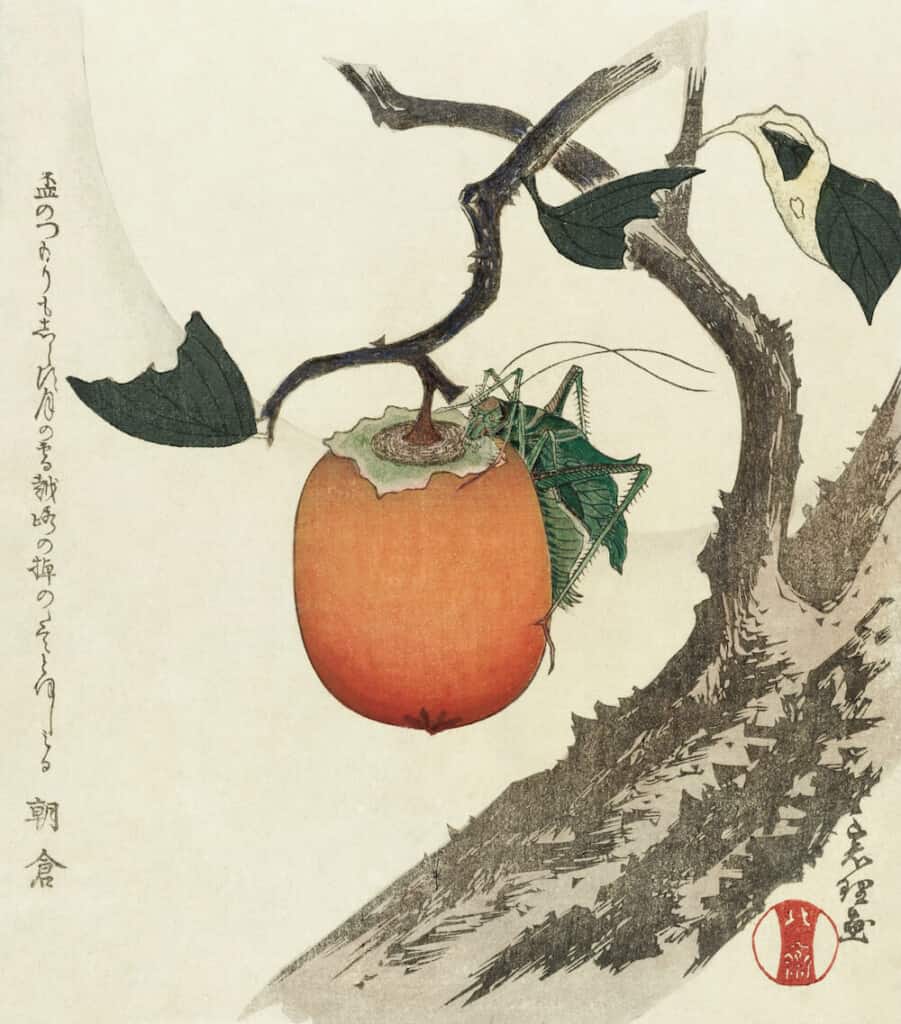
Summary of the Characteristics of Japanese Arts
Here is a summary of Japanese Art and some of unique characteristics of Japanese art:
- Art was important from 705 BC to the present-day
- Religious influence in particular Buddhism and Shintoism
- The Japanese art shows an adaption to other cultures
- Japanese art has a respect for nature
- The Japanese humanized their religious iconography
- Buddhism and Shintoism influenced their art.
- They had and showed a deep appreciation for materials.
- Japan has one of the oldest pottery and ceramic production in the world.
- Japan is known to paint hanging scrolls, folded screens, folding -fans, and fusuma (sliding doors).
- Japanese art is rich in calligraphy.
- Japanese are is known for its ukiyo-e art movement, which means – floating world. During this era, they had a lot of woodblock prints.
- In Architecture, the Japanese used a lot of timber. It has some lacquerware, jade carvings, textiles, and metalwork.
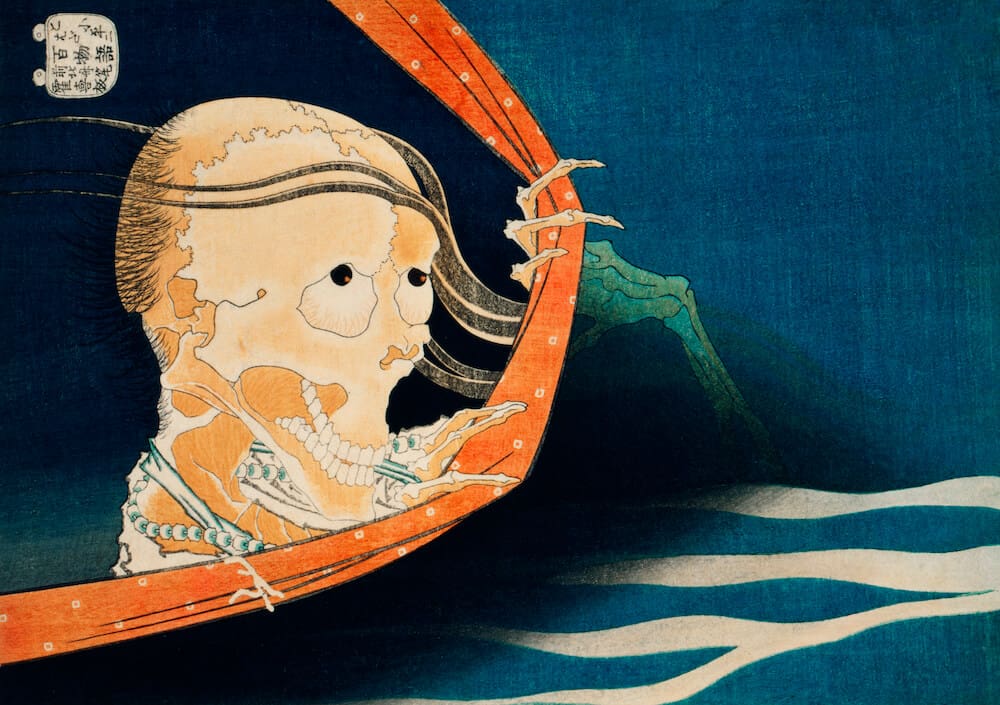
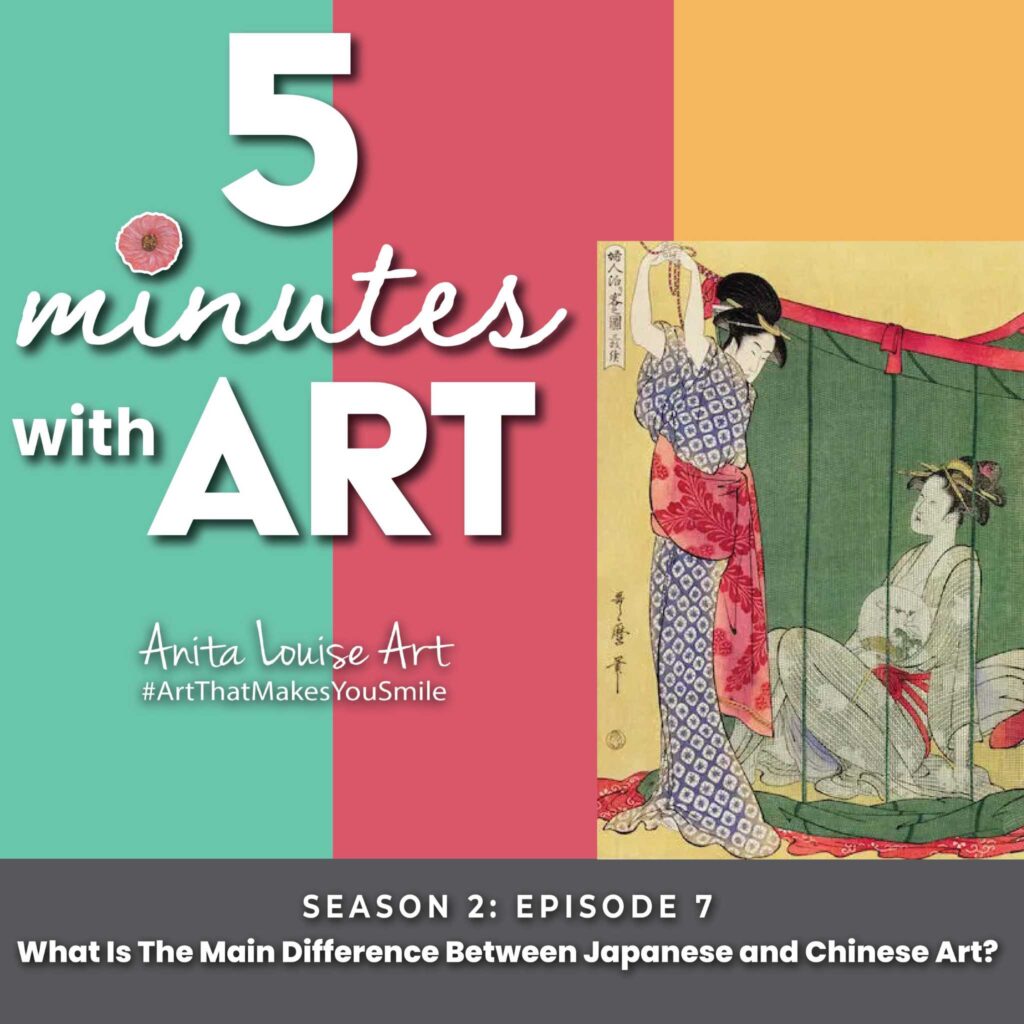
Listen To Our Podcast About What Is The Main Difference Between Japanese and Chinese Art? by clicking here.
Japanese Historical Periods and Art
Like Chinese Art, Japanese Art also has specific periods of time. Here are the major periods of Japanese history. As Japan’s history influences Japanese art, art in Japan emerged as an important force in each historical period.
Below are the important historical periods of Japanese Art and how art was influenced in each.
| Japanese Period | Art Influences | Years | |
| Formative Period | Includes the Paleolithic, Jomon, Yayoi, and Tumulus or Kofun Period, | 7500 BC to 551 AD | |
| Asurak Period | Time of transformation, the arrival of Buddhism | 552 to 645 | |
| Hakuho Period | The rapid expansion of Buddhism throughout Japan | 645 to about 686 | |
| Nara Period | Zen Buddhism established its role in Japanese society and influenced the arts. | 710 to 794 | |
| Heian Period | Japanese culture began to develop, particularly in the literature and arts. The arts started to evolve to be independent of Chinese influences. | 794 to 1185 | |
| Kamakura Period | Bold new sculptural styles emerged. | 1192 to 1333 | |
| Muromachi Period | In this period, arts depended upon the backing of the military and merchant class. | 1334 to 1567 | |
| Azuchi-Momoyama Period | This era is from the Meiji Restoration in 1868 to modern-day Japan. The arts included Western-style painting, Japanese-style painting, wood-block prints, sculpture, Japanese cartoons, and ceramics. | 1568 to early 1600sTokugawa or Edo Period This period saw the flourishing of arts and Japanese artistic styles from paintings, wood-block prints, ceramics, lacquerware, and sculptures. | |
| Edo Period ( | Exploring the Essence of Japan: The Lasting Impact of the Edo Period on National Identity and Global Perceptions | 1603 to 1867 | |
| Modern Period | This era is from the Meiji Restoration in 1868 to modern-day Japan. The arts included Western-style painting, Japanese style painting, wood-block prints, sculpture, Japanese cartoons, and ceramics. | 1868 to present. |
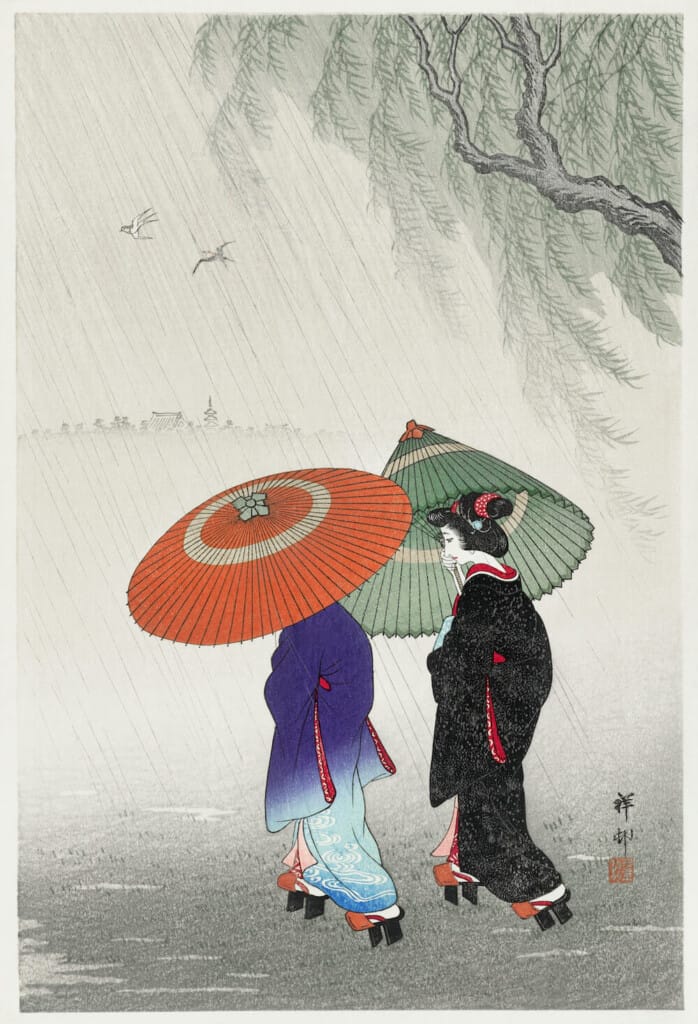
Major Japanese Art Mediums
Traditional Japanese art covers a wide range of art styles and mediums. Here are some of the major Japanese art styles and art mediums:
- Ancient Pottery
- Architecture
- Sculptures
- Ink Paintings
- Calligraphy on silk and paper
- Ukiyo-e paintings and woodblock prints
- Ceramics and pottery
- Origami
- Japanese cartoons and comics.
Japanese art is very sophisticated. Rather than use a pen, the Japanese would use brushes. They would also use many natural materials to paint on as silk or wood.

What Are the Influences on Chinese Art?
As with Japanese art, Chinese art also changed as the history of China changed or developed. Chinese art reflects upon the class structure that existed at different times in Chinese history.
Over the centuries, China has produced art in painting, calligraphy, architecture, pottery, sculpture, bronze, jade carvings, and other decorative arts. These art forms have been produced in China for centuries.
Chinese art was deeply reflected upon the class structure at different times in Chinese history. So, to understand Chinese art, you must also understand Chinese history.
Chinese art had religious influences. The artists wanted to ensure their art aligned with heaven and the gods’ will. Art in China was engrained to have both a social and moral function. The Chinese saw the yin-yang aspects of their art as an essential part of their art.

Summary of the Characteristics of Chinese Arts
Here is a summary of Chinese Art and some of the unique characteristics of Chinese art:
- Art in China has played a significant role from 2070 BC to the present day.
- Religion played a role in art. Buddhism, Confucianism, and Taoism all helped shape Chinese art.
- In early Chinese art, art was about submitting to the will of heaven through rituals and sacrifices. This was shown in some of the religious bronze vessels.
- Chinese art believes in nature’s patterns and living by nature; the energy and rhythm of their art must align with heaven’s sources and the sacred.
- The Chinese believe that the arts unite heaven and the gods together. They believed that the calligrapher or painter could rejuvenate or damage spiritually according to what he painted. Art was very much ingrained into the artist’s very character; the Chinese artist and his character were viewed as part of his art.
- Chinese believe that nature manifests the working of a higher power in art, so you need to live in harmony with yin-yang (female-male) dualism.
- Art in China had both social and moral functions.
- Human relationships were also featured in Chinese art. An example could be a painting of “a gentleman enjoying scholarly works.”
- There is no room in Chinese art for subject matters such as war, violence, nudity, death, or martyrdom; in traditional Chinese art, the art should be edifying.
- Chinese art has a lot of symbolism. For example, bamboo suggests the spirit of the scholar that can be bent but never broken. Jade symbolizes purity and being indestructible.
- Nature is expected to come alive and take on a life of its own in Chinese art. For example, rocks and streams should be alive and living.
- The Chinese painter used the same materials as the calligrapher – brush, ink on silk, or paper.
- The Chinese would judge their artwork by the same criteria as the calligrapher. This included the vitality and expressiveness of the brush strokes and the entire composition’s harmony and rhythm.
- Painting in China is considered linear art. The artists were concerned with the linear perspective and created an illusion of depth on a flat surface.
- The painters were more concerned about artistic techniques than originality.
- The aesthetic lines of calligraphy influenced all the arts in China, from bronze work to Buddhist sculptures to cloisonne wares to lacquerware.
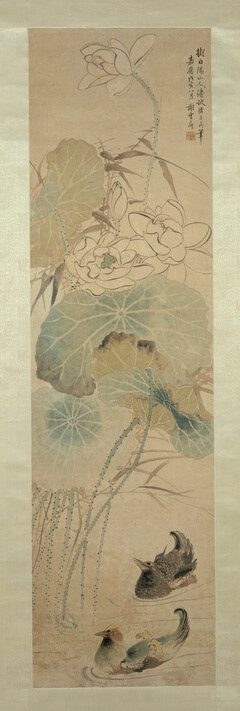
Chinese Historical Periods and Art
Like Japanese Art, Chinese Art also has specific periods of time. Here are the major periods of Chinese history. As China’s history influences Chinese art, art in China emerged as an important force in each historical period.
Below are the important historical periods of Chinese Art and how art was influenced in each.
| Chinese Periods | Art Influences | Years |
| The Xia Dynasty | This era is known as the Bronze Age in China; this Dynasty invented the writing system. | 2070 to 1600 BC |
| The Shang Dynasty | China was divided during this period. | 1600 to 1046 |
| The Zhou Dynasty | Major philosophies and religions emerged during this period, which became the basis for Confucianism and Daoism. | 1045 to 771BC |
| Spring and Autumn Period | Many major prose works were produced during the Spring and Autumn period. | 770 to 476 BC |
| Warring States Period | Until the Warring States period, art was produced by anonymous craftsmen for royal and feudal courts. | 475 to 221 BC |
| The Qin Dynasty | Silk Road trade in China started, and Mahayana Buddhism was first introduced to China. | 221 to 206 BC |
| The Han Dynasty | During this era, Chinese art changed according to the political turmoil in China. Under Mao’s leadership, propaganda art was popular. Artists went in and out of favor according to the politics of China. | 206 BC to 220 AD |
| Pre Sui – A Divided China | This era saw a lot of changes in China, with five dynasties and ten kingdoms. | 200 to 581 AD |
| The Sui Dynasty | The Sui Dynasty united China and built the Grand Canal and the Great Wall. | 581 to 618 |
| The Tang Dynasty | One of the most prosperous dynasties. Poetry, painting, wood-block printing, and tri-colored glazed pottery all flourished. | 618 to 907 |
| The Five Dynasties and Ten Kingdoms | Under the Song Dynasty, China was one of the world’s most powerful empires. The population doubled, and wealth, art, and education exploded. International trade also boomed, which helped the arts, such as porcelain production. | 907 to 960 |
| The Song Dynasty | Genghis Khan led the Yuan Dynasty, so a foreign power ruled China. Marco Polo visited China during this dynasty. | 960 to 1279 |
| The Yuan Dynasty | During this era, Chinese art changed according to the political turmoil of China. Under Mao’s leadership, propaganda art was popular. Artists went in and out of favor according to the politics of China. | 1279 to 1368 |
| The Ming Dynasty | China was now ruled again by ethnic Chinese. Foreign trade, art, and literature all flourished. Traditional Chinese culture flourished. The Forbidden City was completed during this dynasty, | 1368 to 1644 |
| The Qing Dynasty | Last Chinese Dynasty. Ruled by foreigners, i.e., Manuchians. Huge developments in Chinese literature during this time. | 1644 to 1912 |
| Modern Era | During this era, Chinese art changed according to the political turmoil in China. Under Mao’s leadership, propaganda art was popular. Artists went in and out of favor according to the politics of China. | 1912 to Present |
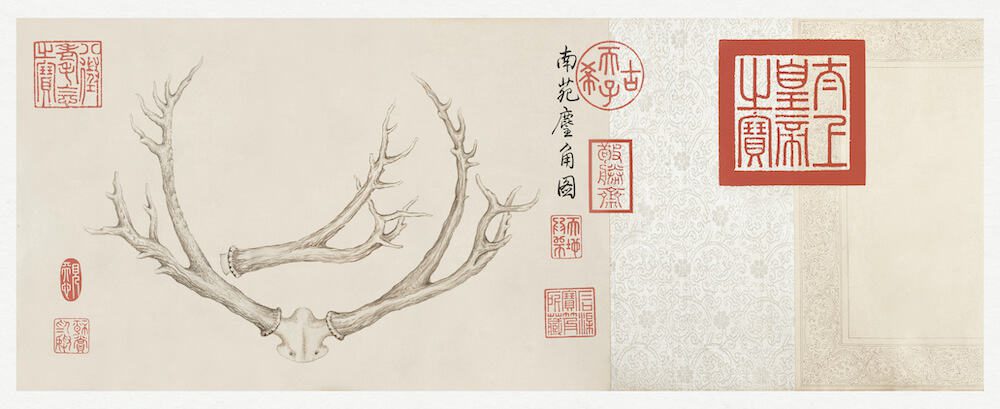
Major Chinese Art Mediums
Traditional Chinese art covers a wide range of art styles and mediums. Here are some of the major Chinese art styles and art mediums:
- Pottery
- Architecture
- Sculptures
- Ink Paintings
- Calligraphy on silk and paper
- woodblock prints
- Porcelain and Ceramics
- Clossione
- Lacquerware
- Stone and Wood Carvings
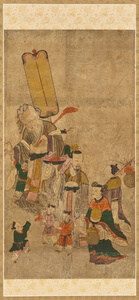
Even though Japanese and Chinese art may have some similarities, they are both quite different. To understand these artistic differences, you need to understand each country’s history, culture, religion, and people.
The Timeless Significance of Chinese and Japanese Art: 10 Reasons for its Continued Relevance
Chinese and Japanese art, spanning thousands of years, has etched its influence in the Eastern hemisphere and globally. From intricately painted scrolls to avant-garde installations, the richness of these artistic traditions continues to captivate contemporary audiences.
Here are ten reasons why Chinese and Japanese art remains significant and vital for understanding, both in its ancient and modern manifestations:
- Historical Documentation: These arts capture many historical periods, dynasties, and societal structures. They offer invaluable insights into the evolution of Eastern civilizations, chronicling everything from grand imperial edicts to everyday life.
- Aesthetic Innovations: The unique aesthetic principles in Japan, such as wabi-sabi – which finds beauty in imperfection and transience – challenge Western notions of beauty and introduce new dimensions to global artistic discourse.
- Mastery of Craftsmanship: Traditional crafts, like Chinese porcelain or Japanese lacquerware, showcase an exceptional level of skill and sophistication. These techniques, honed over centuries, are still revered and sought after.
- Nature’s Muse: Both Chinese and Japanese art exhibit a profound reverence for nature. Whether it’s through Chinese landscape paintings or Japanese ukiyo-e woodblock prints, they capture the essence of nature in ways that resonate with today’s sustainability-driven world.
- Spiritual and Philosophical Depths: Infused with teachings from Buddhism, Taoism, Confucianism, and Shinto, this art is not just visually appealing but also offers spiritual and philosophical explorations, providing solace in our often tumultuous modern lives.
- Calligraphy’s Artistic Elegance: Calligraphy, especially in Chinese culture, is revered as the highest form of visual art. Its graceful brushstrokes and profound poetry convey emotions and philosophies that are still relatable.
- Harmonious Synthesis: These arts often integrate various elements harmoniously – poetry, painting, and calligraphy might come together in a single artwork, showcasing a multifaceted talent and interdisciplinary approach.
- Influence on Modern Art Movements: The minimalistic and avant-garde elements in Eastern art have influenced numerous Western modern art movements, including Impressionism, Post-Impressionism, and Abstract Expressionism.
- Dynamic Contemporary Scene: Modern Chinese and Japanese artists seamlessly blend traditional motifs with contemporary themes, making bold statements on global issues, from consumerism to political dissent.
- Cultural Exchange and Globalization: With the world becoming more interconnected, understanding Chinese and Japanese art is essential for fostering cross-cultural dialogues. These arts provide a window into the socio-cultural dynamics of two influential nations on the global stage.
The profundity and breadth of Chinese and Japanese art – from its most ancient forms to its current evolutions – underscore its enduring significance. Delving into it is an aesthetic journey and a holistic experience encompassing history, philosophy, and cultural introspection.
Anita Louise Art is dedicated to art education, great artists, and inspiring others to find and create their art. We love art that uplifts and inspires. #ArtToMakeYouSmile! #ArtToMakeYouHappy!
If you are interested in seeing any of my art, you can find out more by clicking here. If you are interested in what inspires me and my paintings, you can discover more by clicking here.
We have a free newsletter and would love you to be part of our community; you can subscribe to the newsletter by clicking here. If you have any questions, I would be happy to talk to you at any time. You can reach me, Anita, by clicking here.
Subscribe to our Anita Louise Art YouTube Channel filled with great videos and information by clicking here.
Frequently Asked Questions
What is the main difference between Japanese and Chinese art?
The main difference between Japanese and Chinese art lies in their distinctive styles, techniques, and cultural influences.
How would you describe the style of Japanese art?
Japanese art often emphasizes simplicity, minimalism, and subtlety. It often features delicate brushwork, muted colors, and a focus on nature, reflecting the influence of Zen Buddhism and traditional Japanese aesthetics.
How does Chinese art differ from Japanese art in terms of style?
Chinese art tends to be more intricate and detailed, with bold brushwork and vibrant colors. It often incorporates symbolism, mythological themes, and calligraphy, showcasing the profound influence of Chinese philosophy and historical traditions.
What role does symbolism play in Chinese art compared to Japanese art?
Symbolism plays a significant role in both Chinese and Japanese art. However, Chinese art tends to use more explicit and complex symbolism, drawing from historical, mythological, and philosophical references.
Can you distinguish the influence of religion on Japanese and Chinese art?
Buddhism has had a significant influence on both Japanese and Chinese art. However, in Japanese art, the influence of Zen Buddhism is particularly notable, shaping the aesthetic principles of simplicity, meditation, and mindfulness.
Is there a difference in the use of color between Japanese and Chinese art?
Yes, there is a difference in the use of color. Japanese art often employs subtle and muted colors, reflecting a sense of tranquility and harmony with nature. Chinese art, on the other hand, embraces more vibrant and bold colors, symbolizing auspicious meanings.
How does the use of space differ in Japanese and Chinese art?
Japanese art often employs an aesthetic known as “ma,” which emphasizes the use of empty space to create a sense of balance and tranquility. Chinese art utilizes space differently, often incorporating dense compositions and intricate details.
Are there differences in the depiction of human figures between Japanese and Chinese art?
Yes, there are differences in the depiction of human figures. Japanese art often portrays figures with simple and elegant lines, focusing on expression and gesture. Chinese art tends to depict figures with greater detail, capturing realistic proportions and physical features.
Related Questions
Who Is the Japanese Woodblock Print Artist Utagawa Kuniyoshi (1798 – 1861)?
Utagawa Kuniyoshi was a Japanese artist who was a ukiyo-e art style woodblock print master. His woodblock prints are artistic masterpieces. Kuniyoshi became an artist early in life, but success did not always come easy to him. He eventually became very popular as his artwork influenced the trends and fashions of his day.
You can discover more by reading our blog Who Is the Japanese Woodblock Print Artist Utagawa Kuniyoshi (1798 – 1861)? by clicking here.
Who Was the Chinese Painter 八大山人 Bada Shanren (1626-1705)?
Bada Shanren was born in 1626 as a Ming Dynasty Prince in Jiangxi Province, China. When the Ming Dynasty lost power, he went into hiding for over 40 years at a Buddhist Monastery. When he left the monastery, he was in his 60’s and decided to become a professional artist. Bada Shanren made strong sounds and loud noises while he painted; many people thought he was mad.
You can discover more by reading our blog Who Was the Chinese Painter 八大山人 Bada Shanren (1626-1705)? by clicking here.

